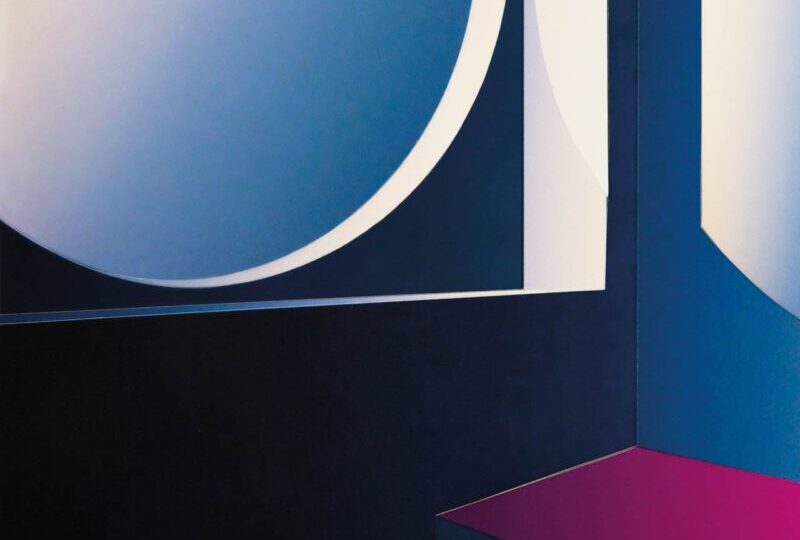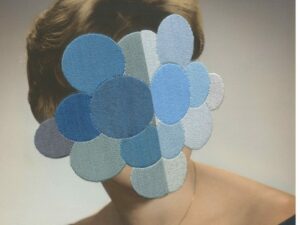For much of the 20th century, photography was understood as a way to capture what Henri Cartier-Bresson described as the “decisive moment.” It is the instant where a scene comes together for a moment of glorious clarity. By the late 1970s, artists began to push against this ideal, asking what happens if the “decisive moment” is made, rather than found. Practitioners like Cindy Sherman, Gregory Crewdson and Jeff Wall pioneered staged photography, also known as tableau photographs, meticulously constructing scenes to evoke an atmosphere or emotion. At the same time, other artists pushed the medium in different directions, embracing collage, photomontage and, later, digital composition. They revealed how photography can be built, assembled, embroidered, layered and altered, challenging the assumption that the camera is only a tool for documenting reality. Today, artists continue to stage, craft and construct photography, highlighting that photography is not a static art, but constantly evolving into new terrain. Here, we bring you five contemporary artists who are experimenting with what an image can be.
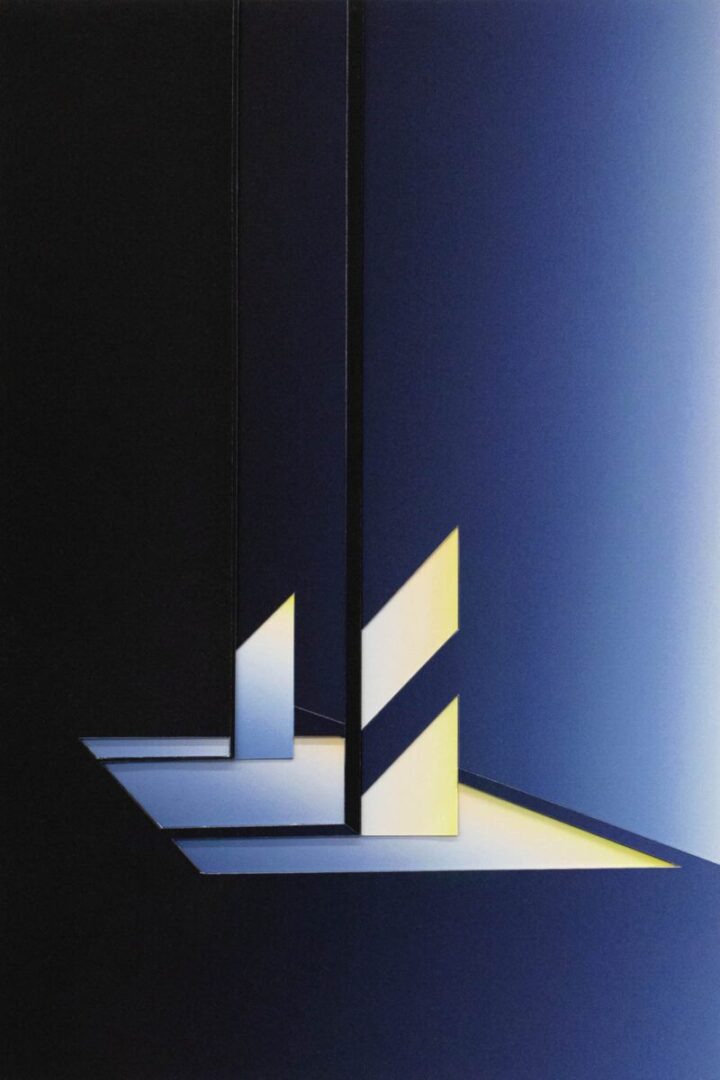
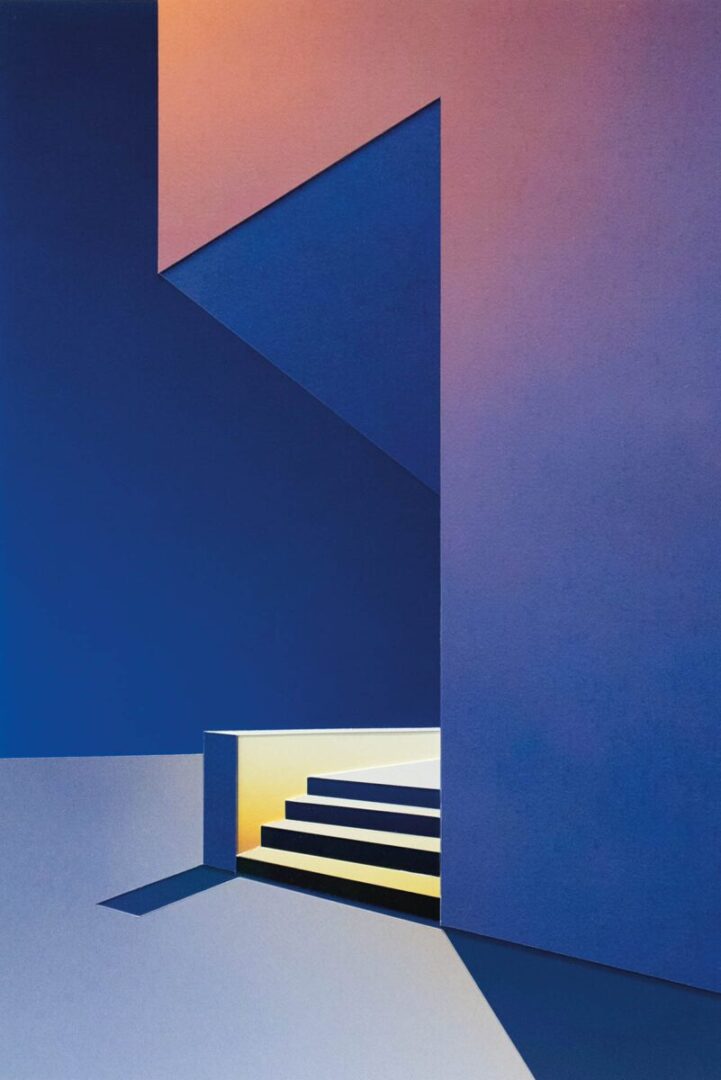
Paper and light are both essential to Popel Coumou’s (b.1979) compositions. The Dutch artist constructs works by positioning geometric shapes over and alongside each other, creating three dimensional spaces from handmade cut-outs. In doing so, she explores the way in which our minds work: how little information we actually need to fill in the blanks and make our own realities. Purple-blue rooms are cast in deep shadow, whilst mysterious staircases seemingly lead to nowhere. Coumou’s latest interiors are built up from various images of skies, whose natural colour gradients and textures come together to construct the illusion of depth. It’s a contemporary take on collage, and she joins artists like James Casebere and Thomas Demand in harnessing analogue construction to render new realms out of humble materials, like card.
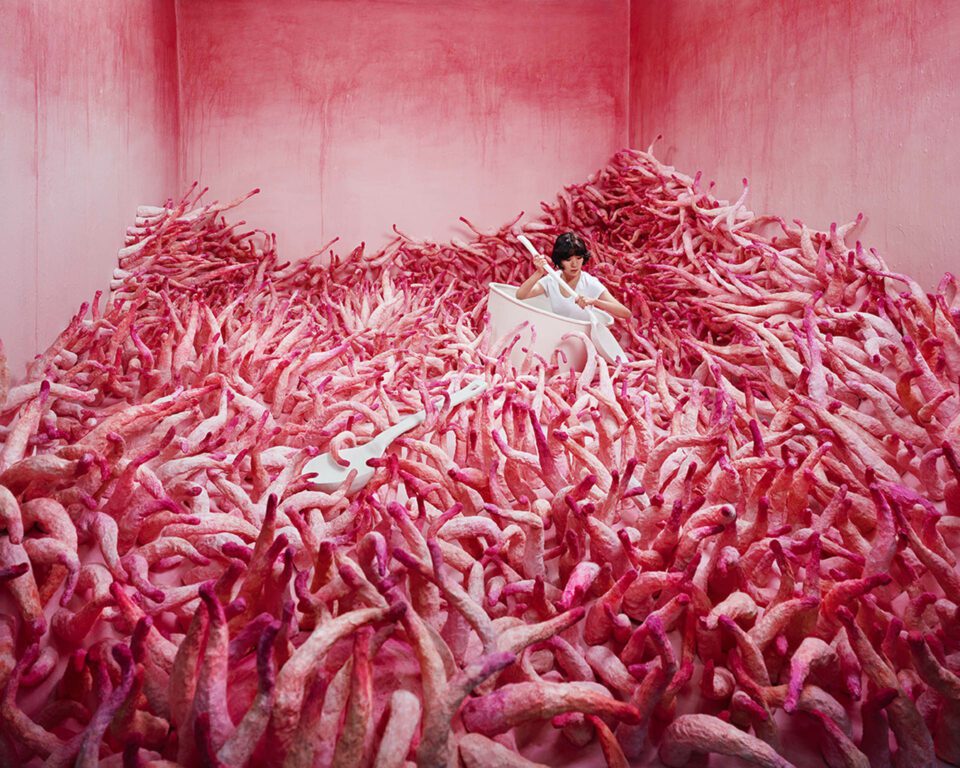
JeeYoung Lee (b. 1983) is a South Korean multidisciplinary artist who works in the studio for weeks, sometimes months, to construct entire universes from her mind. In the following pages, you’ll see oversized sycamore leaves rain down from the ceiling. Origami boats sail through seas of paper leaves, and gold paperclips fill the frame. Elsewhere, bright pink paint bottles splash against walls and butterflies flutter around four poster beds. A figure appears in each scene, navigating fictional worlds with nothing but an umbrella, spoon or paper oar. Lee’s elaborate sets sit within the tradition of surrealist photographers like Sandy Skoglund (b. 1946), who place crowds of objects within block-colour rooms. Yet, there’s something deeply personal about Lee’s compositions; they are windows to her inner thoughts.
jeeyounglee.com | @jee_young_lee
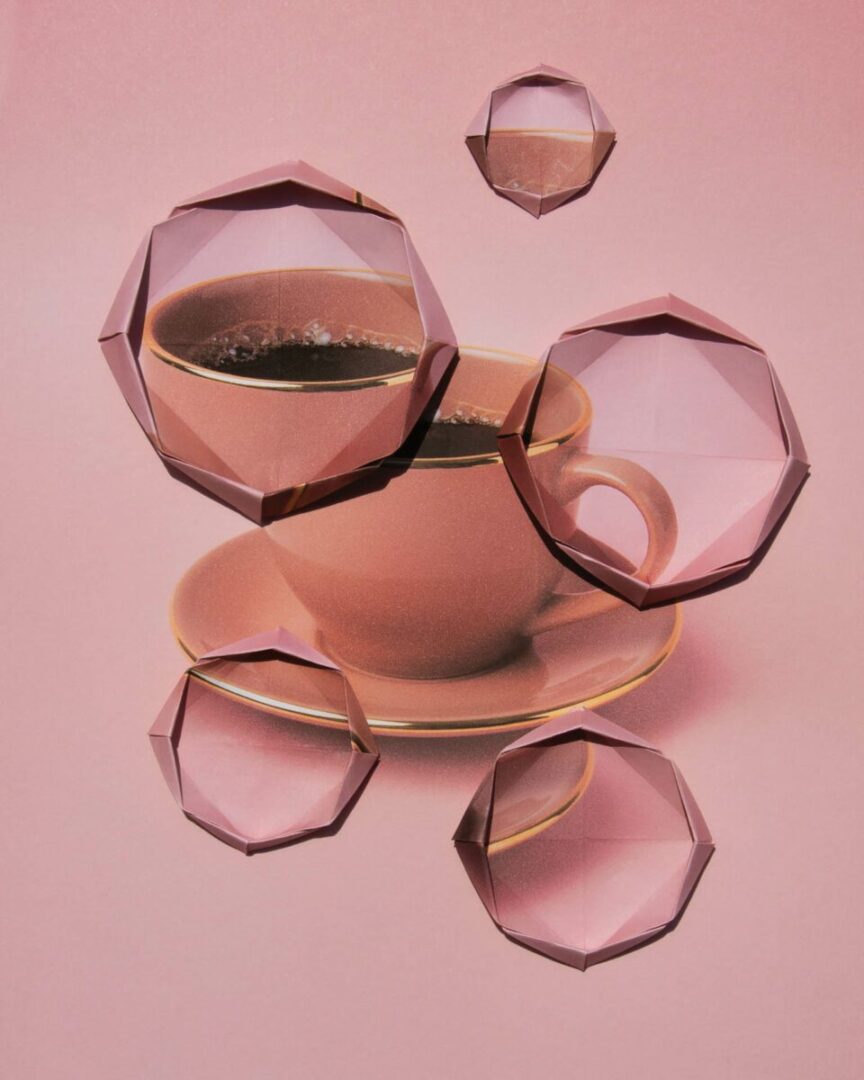
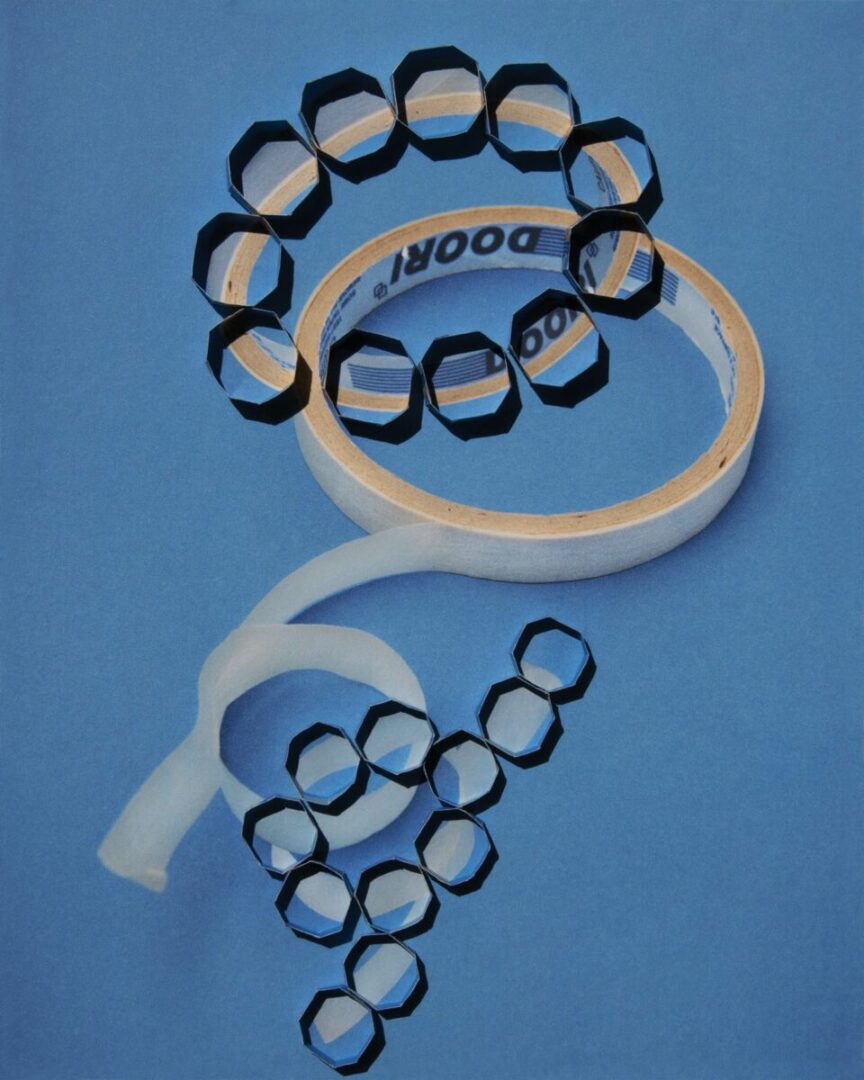
“This is more than just a display of objects,” writes Jooeun Bae (b. 1994), an artist based in Seoul who specialises in collage and photography. The Mono– series, which is shown here, is inspired by 30 of the artist’s immediate family, friends and work colleagues. Each object is matched up to a person, and, after photographing the item, a handmade collage is crafted from the prints. Coffee cups, mirrors, water jugs and headphones are folded and distorted into geometric shapes against bright backgrounds. Bae is passionate about cutting, pasting and combining disparate elements together, which she believes comes in part from her experiences living between the USA and South Korea. “I have had many different but significant events that have shaped who I am now, like how different parts are put together to create one collage.”
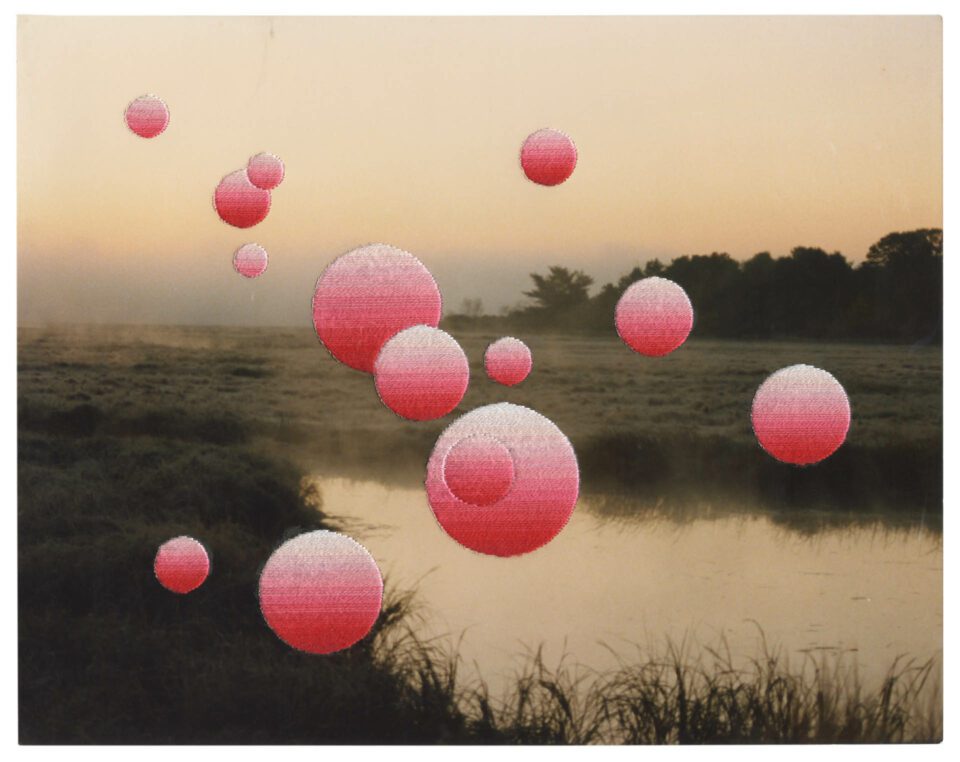
In recent years the definition of picture-making has broadened beyond point-and-click to incorporate new technologies, concepts and ideas that push the still image even further. Julie Cockburn (b. 1966) is a key figure in this movement, best known for embellishing and altering found photographs, immaculately adding hand-embroidered shapes to vintage portraits and landscapes. The artist’s signature motifs include dancing dots, overlaid masks and concentric circles. Stitched starbursts pop out from blossoming trees. Pink bubbles float on top of lakes. Rainbow bullseyes appear in front of faces. Cockburn has been honing her unique approach since childhood, where she grew up surrounded by artists, producing instantly recognisable pictures that blur the lines between conceptual art, photography and craft.
juliecockburn.com | @juliecockburnartist
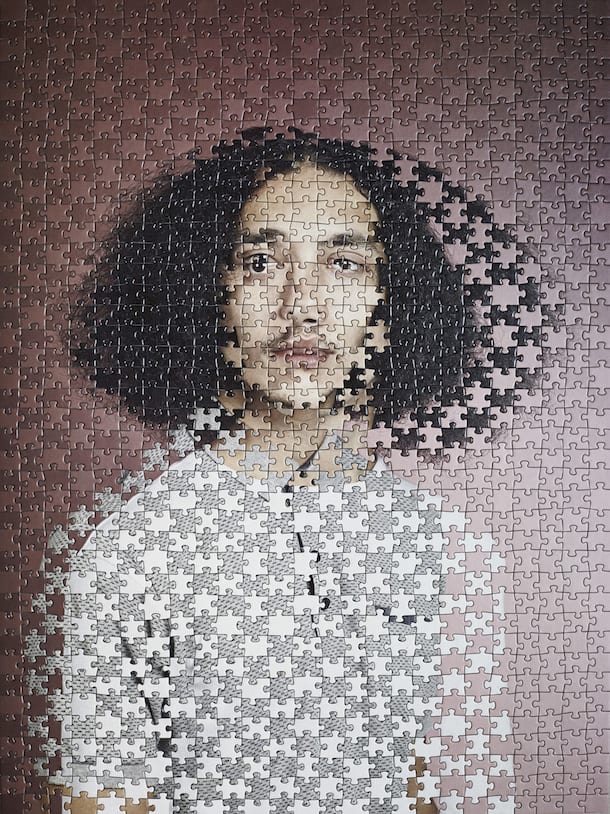
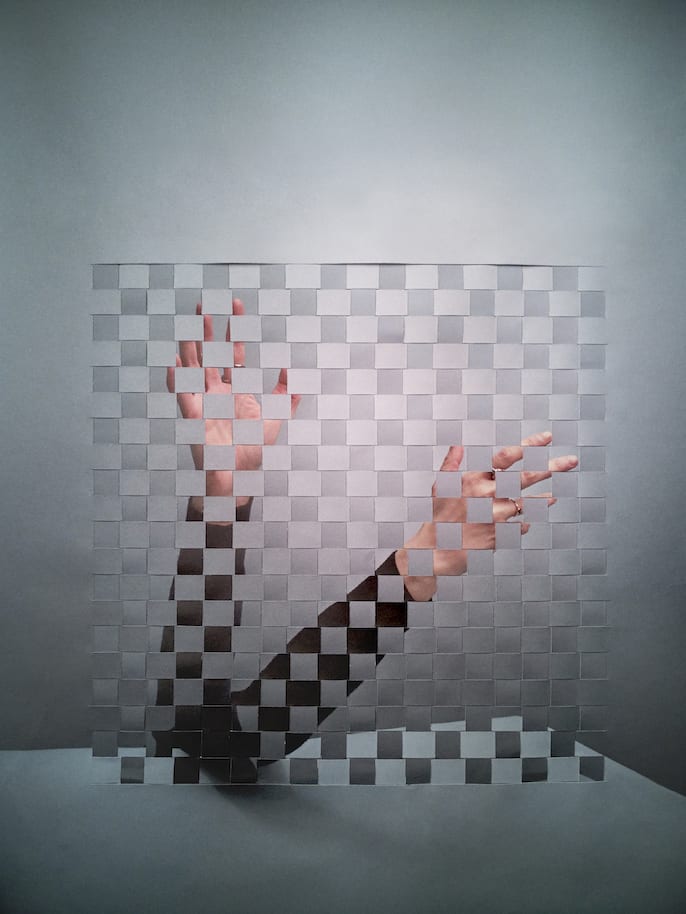
The term “collage” was first coined by Cubist Georges Braque (1882-1963) and Pablo Picasso (1881-1973), from the French word “coller” or “to glue.” Since then, many practitioners across the globe have been inspired to dismantle visuals, literally “piecing” new pictures together whilst drawing attention to the fragile materiality of images. Alma Haser’s (b. 1989) puzzle-piece portraits negotiate the boundaries between the real and the manufactured. These intriguing and unsettling images are disruptions of the human form as we know it today, asking intriguing questions about the manipulation, construction and obfuscation of the self in the 21st century. In an age of hyper-self-awareness, increased video connectivity and social media profiles, these photographs reflect upon the shape-shifting nature of identity today.
Words: Emma Jacob
Image Credits:
1. Popel Coumou, 184 Untitled (2023). Image courtesy of the artist.
2. Popel Coumou, 193 Untitled (2023). Image courtesy of the artist.
3. Popel Coumou, 215 Untitled (2024). Image courtesy of the artist.
4. Image courtesy JeeYoung Lee.
5. Jooeun Bae, Mono Coffee Cup, from Mono- (2021).
6. Jooeun Bae, Mono Tape, from Mono- (2022).
7. Flare 3 (Red) (2023). Hand embroidery on found photograph. © Julie Cockburn. Courtesy of Hopstreet Gallery, Brussels.
8. Alma Haser, Lee and Clinton (1) from the series Within 15 Minutes. Courtesy of the artist.
9. Alma Haser, Hands Pixelated, from the series I Always Have To Repeat Myself . Courtesy of the artist.


